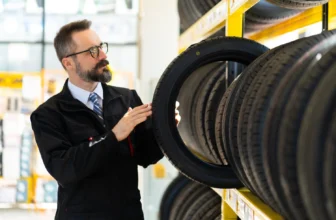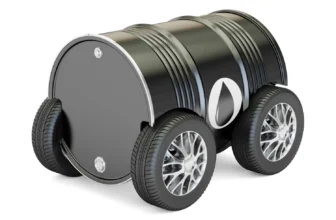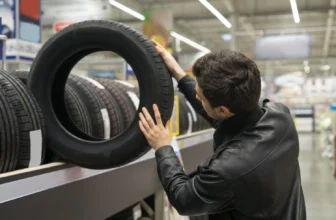
Introduction: Tyre Pressure Isn’t Optional—It’s Essential
Many drivers in Pakistan check their engine oil religiously but forget to monitor one of the most crucial safety and cost factors: tyre pressure. Whether you’re driving through the heat of Multan, the humid roads of Karachi, or the chilly slopes of Murree, the wrong tyre pressure can compromise grip, increase fuel costs, and shorten tyre life. This guide covers five clear signs you’re using the wrong pressure—and how it’s silently draining your wallet and endangering your drive.
1. Uneven or Rapid Tread Wear
The first and most obvious sign of incorrect tyre pressure is abnormal tread wear. Tyres are engineered to make uniform contact with the road, but wrong pressure distorts that balance.
How it looks:
- Overinflated: Tread wears faster in the center while shoulders remain intact.
- Underinflated: Shoulders wear out quickly while the center looks healthy.
This not only reduces tyre life by 25–40%, but also affects cornering grip and braking efficiency—particularly dangerous in monsoon or winter conditions common in parts of Islamabad and Peshawar.
2. Increased Fuel Consumption
Fuel economy is one of the first victims of underinflated tyres. When pressure is low, rolling resistance increases—your engine has to work harder to push the vehicle forward.
According to tyre manufacturers like Bridgestone, a drop of just 5–6 psi from optimal pressure can reduce fuel economy by up to 5–8%. On a car like a Corolla or City that covers 1,500+ km a month, that translates to thousands of rupees in wasted fuel over the year.
Conversely, overinflated tyres reduce road contact, which may slightly improve mileage but sacrifices grip and comfort.
3. Poor Handling or Drifting Feel
If your car feels like it drifts slightly on turns, responds slower during steering input, or lacks “groundedness” at high speed—it could be tyre pressure related.
Symptoms include:
- Loose steering or over-responsive turning (often due to overinflation)
- Delayed steering response and body roll (common with underinflation)
This is especially noticeable on curvy roads like those near Murree or on highways with high-speed lane changes. Always check pressure before a road trip—not during or after.
4. Tyres Heat Up Too Quickly
Tyres naturally warm up during driving, but excessive heat buildup is a sign of internal friction—and often, wrong pressure.
Underinflated tyres flex more as they rotate, which generates extra heat. This softens the rubber, weakens internal structure, and can even cause tyre bulging or failure in extreme heat (a known risk in Punjab summers).
If you touch your tyres after a short drive and they’re hotter than expected, check the pressure immediately. Overheating degrades compounds and shortens life, even if tread looks okay.
5. Longer Braking Distances
In emergencies, every meter matters. Both over and underinflated tyres can significantly extend braking distances—especially on wet or dusty roads.
- Underinflated: Soft sidewalls delay road contact and deform under stress.
- Overinflated: Narrow road contact area reduces grip, causing slippage.
In Pakistani city traffic where sudden braking is common, this could be the difference between a safe stop and a bumper-to-bumper accident. High-speed motorway driving becomes even more dangerous.
How to Check and Maintain the Right Tyre Pressure
Every vehicle has a recommended pressure level, usually mentioned inside the driver-side door, in the owner’s manual, or on the fuel flap. For most sedans, it’s between 30–35 psi. SUVs and trucks often require higher levels, such as 36–42 psi depending on load.
Best Practices:
- Check tyre pressure once every 2 weeks (or weekly in summer)
- Use a digital pressure gauge for accuracy
- Always check pressure when tyres are cold (not right after driving)
- Adjust pressure based on load—more passengers or cargo means slight increase
If you’re unsure, consult your vehicle’s manual or ask a certified tyre dealer like TyrePoint.pk who can guide you based on your vehicle model and usage.
Tyre Pressure vs. Tyre Life: A Direct Relationship
| Tyre Pressure Status | Tread Wear Pattern | Estimated Tyre Life |
|---|---|---|
| Correct | Even wear across tread | 100% (Full expected lifespan) |
| Underinflated | Outer edges worn faster | 60–75% of normal life |
| Overinflated | Center tread worn quickly | 65–80% of normal life |
Final Word: Pressure = Performance + Savings
Tyre pressure isn’t just a minor maintenance task—it’s a daily performance factor. From safety to mileage and comfort to cost, the wrong tyre pressure silently eats away at everything. Keep a pressure gauge in your glove box, check regularly, and treat your tyres with the same attention you give to your engine. In Pakistani road conditions, that small habit goes a long way.






